Find Help
More Items From Ergsy search
-

Mole Biopsy Finds Melanoma
Relevance: 100%
-
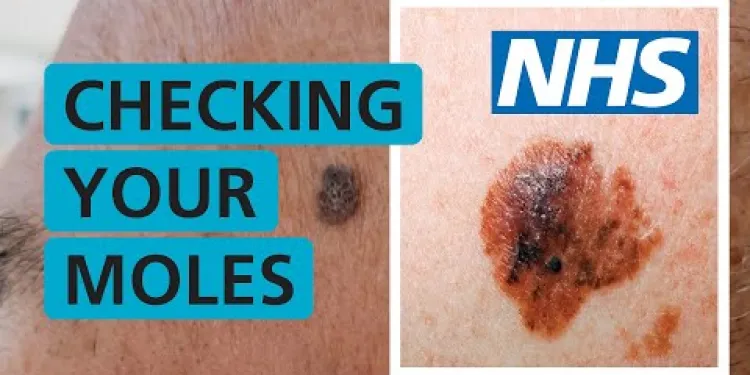
Skin Cancer - How do I check if my mole is skin cancer? | NHS
Relevance: 39%
-
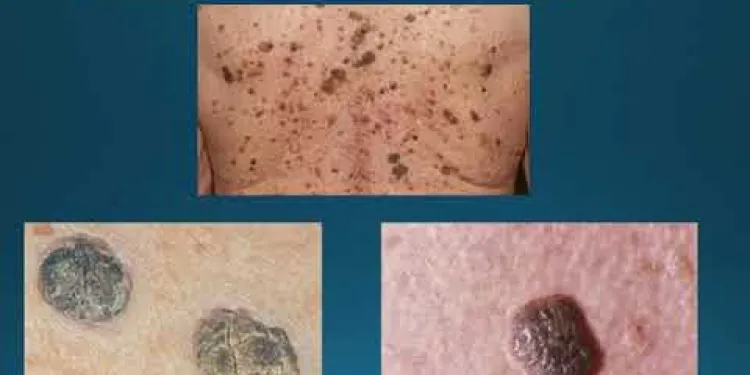
Skin cancer education
Relevance: 27%
-

Worried about signs that could be cancer? Contact your GP practice | NHS
Relevance: 13%
-

What are the long-term effects of sunburn?
Relevance: 12%
-

Can a womb lining test detect cancer?
Relevance: 11%
-

Prostate cancer diagnosis and tests
Relevance: 11%
-

How is psoriasis diagnosed?
Relevance: 10%
-

Can dark-skinned individuals get sunburned?
Relevance: 9%
-
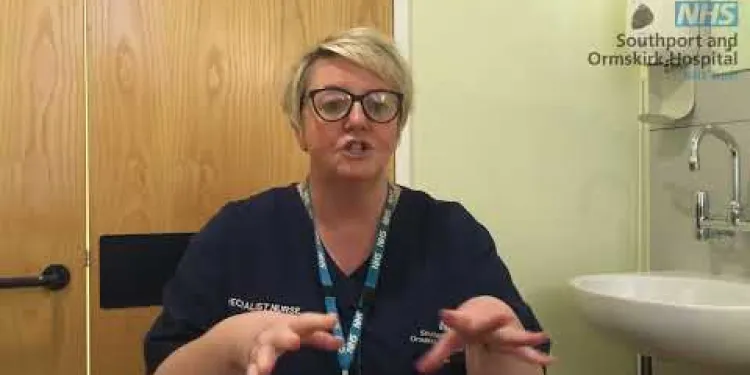
What to expect from your Colposcopy appointment
Relevance: 9%
-
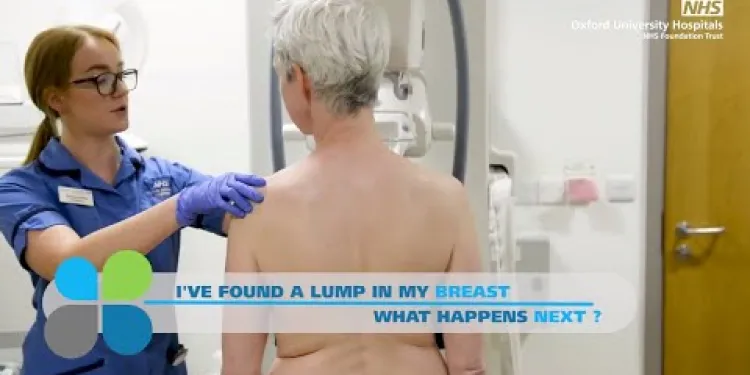
I've found a lump in my breast - What happens next? The breast diagnostic clinic
Relevance: 9%
-

How is bowel cancer diagnosed?
Relevance: 8%
-

How can eczema be diagnosed?
Relevance: 7%
-

What if my mammogram results are abnormal?
Relevance: 7%
-

How is Crohn's disease diagnosed?
Relevance: 7%
-
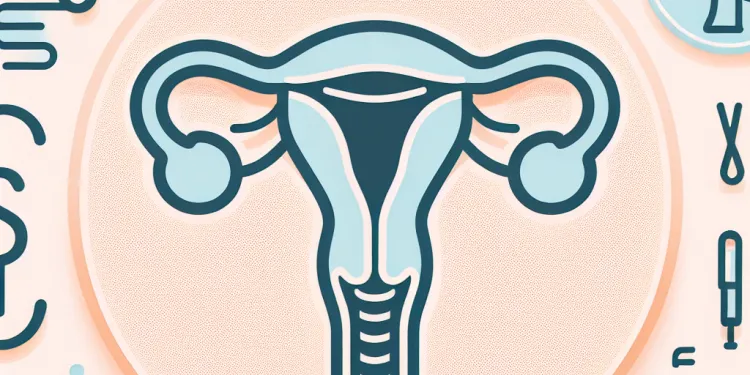
Does the womb lining test require any special preparation?
Relevance: 7%
-

Can sunburns cause permanent damage?
Relevance: 7%
-

What is UV radiation?
Relevance: 7%
-

How is the womb lining test performed?
Relevance: 7%
-

How is the stage of bowel cancer determined?
Relevance: 7%
-

Are there any risks associated with the womb lining test?
Relevance: 7%
-

Is the womb lining test covered by the NHS?
Relevance: 7%
-

Is there any follow-up required after a womb lining test?
Relevance: 6%
-

Are there any risks associated with mammograms?
Relevance: 6%
-
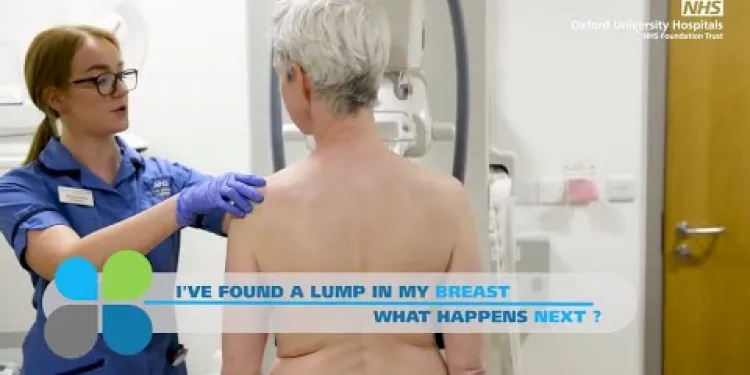
I've found a lump in my breast - What happens next? The breast diagnostic clinic
Relevance: 6%
-

Is the womb lining test covered by the NHS?
Relevance: 6%
-

What is the womb lining test?
Relevance: 6%
-

Can a womb lining test detect cancer?
Relevance: 6%
-

Are there risks associated with a womb lining test?
Relevance: 6%
-

What happens after a womb lining test?
Relevance: 6%
-

How should I prepare for a womb lining test?
Relevance: 6%
-

What is the Womb Lining test?
Relevance: 6%
-

Coeliac Disease: Session 1: What is Coeliac Disease?
Relevance: 6%
-

NHSGGC - What is Coeliac Disease?
Relevance: 6%
-

Surgery under local anaesthetic in the Minor Ops Unit at North Bristol NHS Trust
Relevance: 6%
-

How long does it take to get results from a womb lining test?
Relevance: 6%
-

Diagnosing Coeliac Disease Updated 2021
Relevance: 5%
-
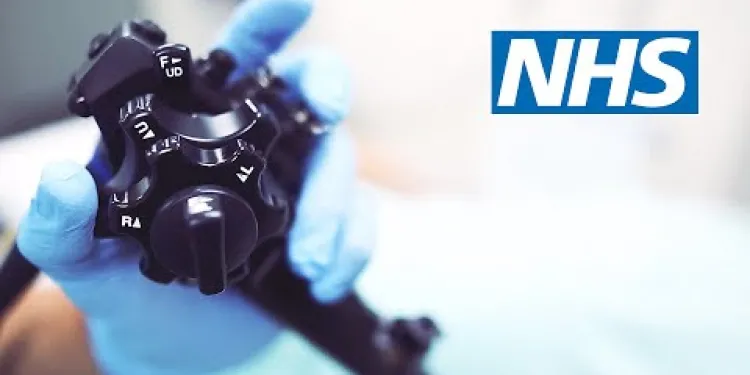
What happens during a colonoscopy?
Relevance: 5%
-

Is a womb lining test painful?
Relevance: 5%
-

Head and Neck Cancer Diagnosis
Relevance: 5%
What is a mole biopsy?
A mole biopsy is a medical procedure in which a sample of tissue is taken from a mole (also known as a nevus) for examination under a microscope. The purpose of a mole biopsy is to determine whether the mole is cancerous (malignant) or non-cancerous (benign).
There are different types of mole biopsies, including:
- Punch Biopsy: In a punch biopsy, a special tool called a punch is used to remove a small, cylindrical sample of tissue from the mole. The area is typically numbed with a local anesthetic before the procedure. The removed tissue is then sent to a laboratory for examination by a pathologist.
- Excisional Biopsy: In an excisional biopsy, the entire mole is surgically removed along with a small margin of surrounding skin. This type of biopsy is often used when a mole appears suspicious or when a complete sample is needed for examination. The removed tissue is sent to a laboratory for analysis.
- Incisional Biopsy: An incisional biopsy involves removing only a portion of the mole for examination. This may be done if the mole is large, and removing the entire mole would result in significant scarring or if only a portion of the mole appears abnormal.
- Shave Biopsy: A shave biopsy involves using a scalpel or razor blade to shave off the top layers of the mole for examination. This type of biopsy is typically used for moles that are raised above the skin surface.
After the mole biopsy, the tissue sample is sent to a pathology laboratory, where it is examined under a microscope by a pathologist. The pathologist will assess the cells in the tissue sample to determine whether there are any signs of cancer, such as abnormal cell growth or changes in cell structure.
Based on the results of the mole biopsy, further treatment or monitoring may be recommended. If the biopsy indicates that the mole is cancerous, additional procedures such as further excision or Mohs surgery may be necessary to remove any remaining cancerous cells. If the biopsy shows that the mole is benign, no further treatment may be needed, although regular monitoring of the area may be recommended.
Mole Biopsy Finds Melanoma
Understanding Melanoma
Melanoma is one of the most serious forms of skin cancer. It originates in melanocytes, the cells responsible for producing melanin, the pigment that gives skin its colour. Unlike other skin cancers, melanoma can spread to other parts of the body if not detected and treated early, making timely diagnosis crucial. Regular skin checks and biopsies of suspicious moles are essential in preventing the escalation of this deadly illness.
The Importance of Mole Biopsies
A mole biopsy is a simple and effective procedure where a dermatologist removes a small sample of a mole for laboratory examination. This is particularly vital for individuals in the United Kingdom, where instances of melanoma have been increasing, possibly due to changes in sun exposure habits and tanning practices. A biopsy can help detect abnormal cells that could indicate melanoma, allowing for timely intervention and treatment.
Identifying Suspicious Moles
Recognising the signs of potentially dangerous moles can be lifesaving. The ABCDE rule is a commonly used guideline:
- Asymmetry: One half of the mole does not match the other half.
- Border: Edges are irregular, ragged, or blurred.
- Color: Multiple colours such as brown, black, tan, and sometimes red or blue.
- Diameter: The mole is larger than 6mm (about the size of a pencil eraser).
- Evolving: Any change in size, shape, or colour.
After a Melanoma Diagnosis
If a biopsy finds melanoma, further measures will be taken to identify the stage and extent of cancer. Early-stage melanomas are often treatable with surgery alone. More advanced cases may require additional treatments such as radiation therapy, immunotherapy, or targeted treatments. In the UK, the NHS provides comprehensive care and support for melanoma patients, ensuring access to the latest treatments and clinical trials.
Preventive Measures
Preventing melanoma involves protecting your skin from excessive UV radiation. This includes using sunscreen with high SPF, wearing protective clothing, and avoiding tanning beds. Regular skin examinations by a dermatologist, especially for those with a family history of skin cancer or a large number of moles, are recommended to catch melanoma early.
What is a mole biopsy?
A mole biopsy is a test that a doctor does. They take a small piece of a mole to look at it closely. This helps find out if the mole is healthy or if it might be cancer.
There are different ways to do a mole biopsy:
- Punch Biopsy: The doctor uses a tool like a tiny cylinder to take a piece of the mole. They make sure you don’t feel pain by using medicine to numb the area. The piece of mole is checked in a lab.
- Excisional Biopsy: The doctor removes the whole mole and a little bit of skin around it. They do this if the mole looks unusual. The removed skin goes to a lab for checking.
- Incisional Biopsy: The doctor takes only a part of the mole. This is useful if the mole is big. It’s a way to avoid a big scar or if only part of the mole needs checking.
- Shave Biopsy: The doctor shaves off the top part of the mole with a blade. They do this when the mole sticks out from the skin.
After taking the sample, it goes to a lab where an expert looks at it through a microscope. The expert checks for signs of cancer, like odd-looking cells.
Once the results are ready, the doctor will explain what they mean. If the mole has cancer, more treatment might be needed. This could mean more surgery to make sure all the cancer is gone. If the mole is not cancer, you might not need more treatment. But the doctor might suggest checking the area regularly just to be safe.
Here are some things that might help you:
- Ask your doctor to explain things simply.
- Bring a friend or family member for support at appointments.
- Ask for drawings or diagrams if they help you understand better.
Mole Biopsy Finds Melanoma
Understanding Melanoma
Melanoma is a very serious type of skin cancer. It starts in skin cells that make our skin's colour. This cancer can spread to other parts of the body. It is important to find it early. This is why checking skin and moles often is important.
The Importance of Mole Biopsies
A mole biopsy is a simple test. A doctor takes a small piece of your mole to look at in a lab. In the UK, more people are getting melanoma. This might be because of how people spend time in the sun. A biopsy can find early signs of melanoma. This helps doctors treat it quickly.
Identifying Suspicious Moles
Knowing how to spot dangerous moles can save lives. Use the ABCDE rule to remember:
- Asymmetry: One side of the mole looks different from the other side.
- Border: The edge of the mole is not smooth.
- Color: The mole has different colours like brown, black, and red.
- Diameter: The mole is bigger than a pencil eraser.
- Evolving: The mole changes in size, shape, or colour.
After a Melanoma Diagnosis
If a biopsy shows melanoma, doctors will check how serious it is. If found early, they can often remove it with surgery. If it's more serious, other treatments like special medicine or radiation might be needed. In the UK, the NHS helps people with melanoma get the care they need.
Preventive Measures
To help stop melanoma, protect your skin from too much sun. Use sunscreen with high SPF, wear hats, and avoid tanning beds. Visit a doctor regularly to check your skin, especially if skin cancer runs in your family or if you have many moles.
Frequently Asked Questions
What is a mole biopsy?
A mole biopsy is a medical procedure in which a small sample of skin tissue from a mole is removed and examined under a microscope to determine if it’s cancerous.
What is melanoma?
Melanoma is a serious form of skin cancer that begins in cells called melanocytes, which produce the pigment melanin that colours the skin.
Why is a mole biopsy important?
A mole biopsy is important to diagnose melanoma early, as early-stage melanoma can often be treated successfully. Delay in diagnosis and treatment can lead to the cancer spreading to other parts of the body.
How is a mole biopsy performed?
A mole biopsy can be performed through several methods, such as shave biopsy, punch biopsy, or excisional biopsy. The choice of method depends on the size and location of the mole.
Is a mole biopsy painful?
The procedure is usually performed under local anaesthesia, so you might feel a slight sting from the anaesthetic injection but should not feel pain during the biopsy itself.
What happens after a mole biopsy?
The tissue sample is sent to a laboratory for examination by a pathologist. Results can take a few days to a couple of weeks. Your doctor will discuss the results and next steps with you.
What should I do if my mole biopsy finds melanoma?
If your biopsy indicates melanoma, your doctor will discuss a treatment plan with you. This may involve surgery to remove any remaining cancerous tissue, and possibly additional treatments like immunotherapy, radiation, or chemotherapy.
How can I reduce my risk of melanoma?
Protect your skin from excessive sun exposure by using sunscreen, wearing protective clothing, and avoiding tanning beds. Regularly check your skin for any new moles or changes in existing moles and consult a doctor if you notice anything suspicious.
What does it mean if a mole is atypical?
An atypical mole, or dysplastic nevus, has irregular characteristics that differ from a normal mole. These moles are not cancerous but may have a higher risk of developing into melanoma and should be monitored closely.
How often should I check my moles for changes?
It is advisable to check your skin once a month for any new moles or changes in existing moles. Use a mirror or have someone help you check hard-to-see areas.
Can melanoma be cured if caught early?
Yes, melanoma can often be cured if detected and treated in its early stages. Early diagnosis and treatment are crucial to prevent the spread of melanoma.
What are the warning signs of melanoma?
Warning signs include a mole that changes in size, shape, or colour, has irregular borders, multiple colours, or is asymmetrical. Other signs include itching, bleeding, or a sore that doesn’t heal.
Is melanoma more common in certain skin types?
Melanoma can affect anyone, but it is more common in individuals with fair skin, light hair, and light eyes. However, people with darker skin can also develop melanoma.
How is melanoma treated?
Treatment depends on the stage of the melanoma. It often includes surgical removal of the tumor, and may involve additional therapies such as immunotherapy, targeted therapy, chemotherapy, or radiation.
Where can I get a mole biopsy in the UK?
Mole biopsies can be performed by dermatologists in hospitals, clinics, and specialised skin cancer centres across the UK. You should consult your GP for a referral to a qualified specialist.
What is a mole biopsy?
A mole biopsy is a special test that a doctor does.
The doctor takes a small piece from a mole on your skin.
They look at this small piece under a microscope.
This helps them see if the mole is healthy or if there is a problem.
If you ever have a mole biopsy, a doctor or nurse will explain everything to you.
You can ask questions if you don't understand something.
Remember, getting a mole biopsy is important if the doctor is worried about a mole.
You can watch videos or look at pictures to help you understand more.
A mole biopsy is when a doctor takes a tiny piece of skin from a mole. This piece is looked at closely to see if it has cancer.
What is melanoma?
Melanoma is a type of skin cancer. It starts in the cells that give your skin its color. These cells are called melanocytes.
If melanoma is not treated, it can spread to other parts of the body. This is why it's important to see a doctor if you notice a new or changing spot on your skin.
To help understand more, you can:
- Use picture books about the skin.
- Ask someone to explain it using simple words.
- Watch videos with clear explanations about skin health.
Melanoma is a type of skin cancer. It is very serious. It starts in cells called melanocytes. These cells make melanin. Melanin is what gives your skin its color.
If you need help reading, you can use tools like audiobooks or ask someone to read out loud to you. Highlighting important words or using a reading pen can also help.
Why do doctors check moles?
Doctors check moles to make sure they are healthy. If a mole looks different or changes, a doctor might take a small piece to look at. This helps keep your skin safe.
If you find moles confusing, you can ask someone to explain them to you. It can also help to look at pictures or watch videos about moles.
A mole biopsy is a test to check if a mole on your skin is dangerous. It helps find melanoma, which is a type of skin cancer. It is good to find melanoma early because then it can often be treated and made better. If we wait too long, the cancer can spread to other places in the body. This is why a mole biopsy is very important.
How do doctors take a piece of a mole to check it?
Doctors can test a mole in different ways. They might use a shave biopsy, a punch biopsy, or an excisional biopsy. The doctor will choose the best way based on how big the mole is and where it is on the body.
Does a mole biopsy hurt?
A mole biopsy is when a doctor takes a small piece of skin to check it. The doctor uses a special tool. It might feel like a little pinch.
Doctors may give you medicine so it does not hurt. This is called "numbing" medicine.
If you are worried, tell the doctor. They can explain what happens. You can also bring a toy or something to hold in your hand to help you feel better.
It can help to take deep breaths. This keeps you calm during the biopsy.
The doctor will give you medicine to stop you feeling pain. You might feel a little sting when they give you the medicine, but you won't feel any pain when they take the sample.
What happens after a mole biopsy?
A mole biopsy is when a doctor takes a small part of your skin to check it. Here is what happens after:
- The doctor will send the skin to a lab. Experts will look at it there.
- You might feel sore where the mole was taken. It will heal soon.
- The doctor will tell you the results. This might take a few days.
It's important to keep the area clean. You can ask someone to help you.
The tissue is sent to a lab to be looked at by a doctor. This can take a few days or up to two weeks. Your doctor will talk to you about what they find and what to do next.
What if my mole test shows melanoma?
If the doctor says your mole is melanoma, don't worry. Here are some steps to help you:
- Talk to your doctor: Ask any questions you have. It's okay to ask for things to be explained in a simple way.
- Get support: Talk to family or friends about your feelings. They can help you feel better.
- Learn more: Ask your doctor for easy-to-read information about melanoma.
- Write things down: Write questions and notes to help you remember what the doctor says.
Remember, you are not alone. There are people and resources that can help you.
If a test shows you have melanoma, your doctor will talk with you about how to treat it. You might need an operation to take out the cancer. You might also need other treatments like special medicine, radiation, or strong drugs.
How can I lower my chance of getting skin cancer?
Take care of your skin when you go outside in the sun. Use sunscreen and wear clothes that cover your skin. Stay away from tanning beds because they can hurt your skin.
Look at your skin often to see if you have any new moles or if your moles change. If you see something different or strange, talk to a doctor.
Here are some helpful tips:
- Use sunscreen with a high SPF number.
- Wear a hat and sunglasses.
- Try to stay in the shade when the sun is very bright.
- Ask someone you trust to help you check your skin.
What does it mean if a mole looks different?
A mole is a small spot on the skin. Sometimes, a mole can look different from others. This is called 'atypical'.
If a mole is atypical, it may be bigger, change shape, or have more than one color.
It is important to tell a grown-up or a doctor if you notice any changes in a mole.
Using a magnifying glass can help you see the mole better. You can also take a photo to check for changes over time.
A special kind of mole, called an atypical mole or dysplastic nevus, looks different from a normal mole. These moles are not cancer. But sometimes, they can change and become a type of skin cancer called melanoma. So, it's important to keep an eye on them.
How often should I look at my moles for changes?
Look at your moles once a month. Check if they look different.
Here are some tips to help you:
- Use a mirror to see better.
- Ask a friend or family member to help you.
- Make a note of what your moles look like.
- If a mole changes, tell a doctor.
It is a good idea to look at your skin every month. See if there are any new moles or changes in the moles you already have. Use a mirror or ask someone to help you check places you can't see easily.
Can melanoma be fixed if found early?
Melanoma is a type of skin cancer.
If doctors find it early, it can often be treated and go away.
It is important to check your skin for new or changing spots.
Going to the doctor is good if you see something different on your skin.
Using a magnifying glass can help you look more closely at spots.
Ask someone to help you look at places you can’t see, like your back.
Yes, melanoma can often be cured if you find it early and get it treated. It is very important to find melanoma early and start treatment so it doesn’t spread.
What are the warning signs of melanoma?
Melanoma is a type of skin cancer. Here are things to look for:
- New spot or mole: Look out for any new spots on your skin.
- Changes in moles: Check if a mole changes in size, shape, or color.
- Odd shape: Moles that are not round or even can be a worry.
- Many colors: Moles with more than one color can be a sign.
- Size: Look for moles bigger than a pencil eraser.
- Itching or bleeding: Moles that itch or bleed need checking.
If you notice these signs, tell an adult or see a doctor. Use a mirror to see hard-to-reach places, and ask someone you trust to help you check your skin.
Watch out for moles that get bigger, change shape, or change color. If the edges look uneven, the colors look mixed, or the mole looks different on each side, these are warning signs. Also, be careful if the mole itches, bleeds, or if there is a sore that doesn’t get better.
Does melanoma happen more often in some skin types?
Melanoma is a kind of skin cancer. It can happen to anyone, but it is more common in people with light skin. This is because light skin has less protection from the sun. People with darker skin can also get melanoma, but it is not as common.
Some things can help you stay safe from melanoma:
- Wear sunscreen to protect your skin from the sun.
- Wear a hat and sunglasses when you go outside.
- Stay in the shade when the sun is very strong.
- Check your skin often to see if there are any changes or new spots.
- Ask a doctor for help if you see anything that looks unusual on your skin.
Melanoma is a type of skin cancer. Anyone can get melanoma. But, people with light skin, hair, and eyes get it more often. People with dark skin can get it too.
How is melanoma treated?
Melanoma is a type of skin cancer. Doctors have different ways to treat melanoma. Here are some common treatments:
- Surgery: Doctors remove the cancer from the skin.
- Medicine: Some people take pills or get shots to help fight the cancer.
- Radiation: Doctors use special rays to kill cancer cells.
It is important to see your doctor if you think you have melanoma. They will help you choose the best treatment. You can also ask someone you trust to come with you to the doctor. They can help you understand what the doctor says.
The way we help depends on how bad the melanoma is. Doctors usually do surgery to take out the tumor. They might also use other treatments to help, like special medicines or radiation.
Where can I get a mole checked in the UK?
If you have a mole and you want it checked by a doctor, you can go to your local doctor’s office. This is called a GP surgery. A doctor there can look at your mole and see if it needs more checks.
You can also visit a skin specialist. They are called dermatologists. Your doctor can help you find one.
Sometimes you might need a test on your mole. This is called a biopsy. The doctor will take a small piece of the mole to look at it more closely.
If you need help using a computer to find this information, ask someone you trust. You can also call the doctor’s office for help.
Doctors can check moles at hospitals, clinics, and special skin cancer centers in the UK. Talk to your family doctor to see a specialist.
Useful Links
- Ergsy carfully checks the information in the videos we provide here.
- Videos shown by Youtube after a video has completed, have NOT been reviewed by ERGSY.
- To view, click the arrow in centre of video.
- Most of the videos you find here will have subtitles and/or closed captions available.
- You may need to turn these on, and choose your preferred language.
- Go to the video you'd like to watch.
- If closed captions (CC) are available, settings will be visible on the bottom right of the video player.
- To turn on Captions, click settings .
- To turn off Captions, click settings again.
More Items From Ergsy search
-

Mole Biopsy Finds Melanoma
Relevance: 100%
-

Skin Cancer - How do I check if my mole is skin cancer? | NHS
Relevance: 39%
-

Skin cancer education
Relevance: 27%
-

Worried about signs that could be cancer? Contact your GP practice | NHS
Relevance: 13%
-

What are the long-term effects of sunburn?
Relevance: 12%
-

Can a womb lining test detect cancer?
Relevance: 11%
-

Prostate cancer diagnosis and tests
Relevance: 11%
-

How is psoriasis diagnosed?
Relevance: 10%
-

Can dark-skinned individuals get sunburned?
Relevance: 9%
-

What to expect from your Colposcopy appointment
Relevance: 9%
-

I've found a lump in my breast - What happens next? The breast diagnostic clinic
Relevance: 9%
-

How is bowel cancer diagnosed?
Relevance: 8%
-

How can eczema be diagnosed?
Relevance: 7%
-

What if my mammogram results are abnormal?
Relevance: 7%
-

How is Crohn's disease diagnosed?
Relevance: 7%
-

Does the womb lining test require any special preparation?
Relevance: 7%
-

Can sunburns cause permanent damage?
Relevance: 7%
-

What is UV radiation?
Relevance: 7%
-

How is the womb lining test performed?
Relevance: 7%
-

How is the stage of bowel cancer determined?
Relevance: 7%
-

Are there any risks associated with the womb lining test?
Relevance: 7%
-

Is the womb lining test covered by the NHS?
Relevance: 7%
-

Is there any follow-up required after a womb lining test?
Relevance: 6%
-

Are there any risks associated with mammograms?
Relevance: 6%
-

I've found a lump in my breast - What happens next? The breast diagnostic clinic
Relevance: 6%
-

Is the womb lining test covered by the NHS?
Relevance: 6%
-

What is the womb lining test?
Relevance: 6%
-

Can a womb lining test detect cancer?
Relevance: 6%
-

Are there risks associated with a womb lining test?
Relevance: 6%
-

What happens after a womb lining test?
Relevance: 6%
-

How should I prepare for a womb lining test?
Relevance: 6%
-

What is the Womb Lining test?
Relevance: 6%
-

Coeliac Disease: Session 1: What is Coeliac Disease?
Relevance: 6%
-

NHSGGC - What is Coeliac Disease?
Relevance: 6%
-

Surgery under local anaesthetic in the Minor Ops Unit at North Bristol NHS Trust
Relevance: 6%
-

How long does it take to get results from a womb lining test?
Relevance: 6%
-

Diagnosing Coeliac Disease Updated 2021
Relevance: 5%
-

What happens during a colonoscopy?
Relevance: 5%
-

Is a womb lining test painful?
Relevance: 5%
-

Head and Neck Cancer Diagnosis
Relevance: 5%


